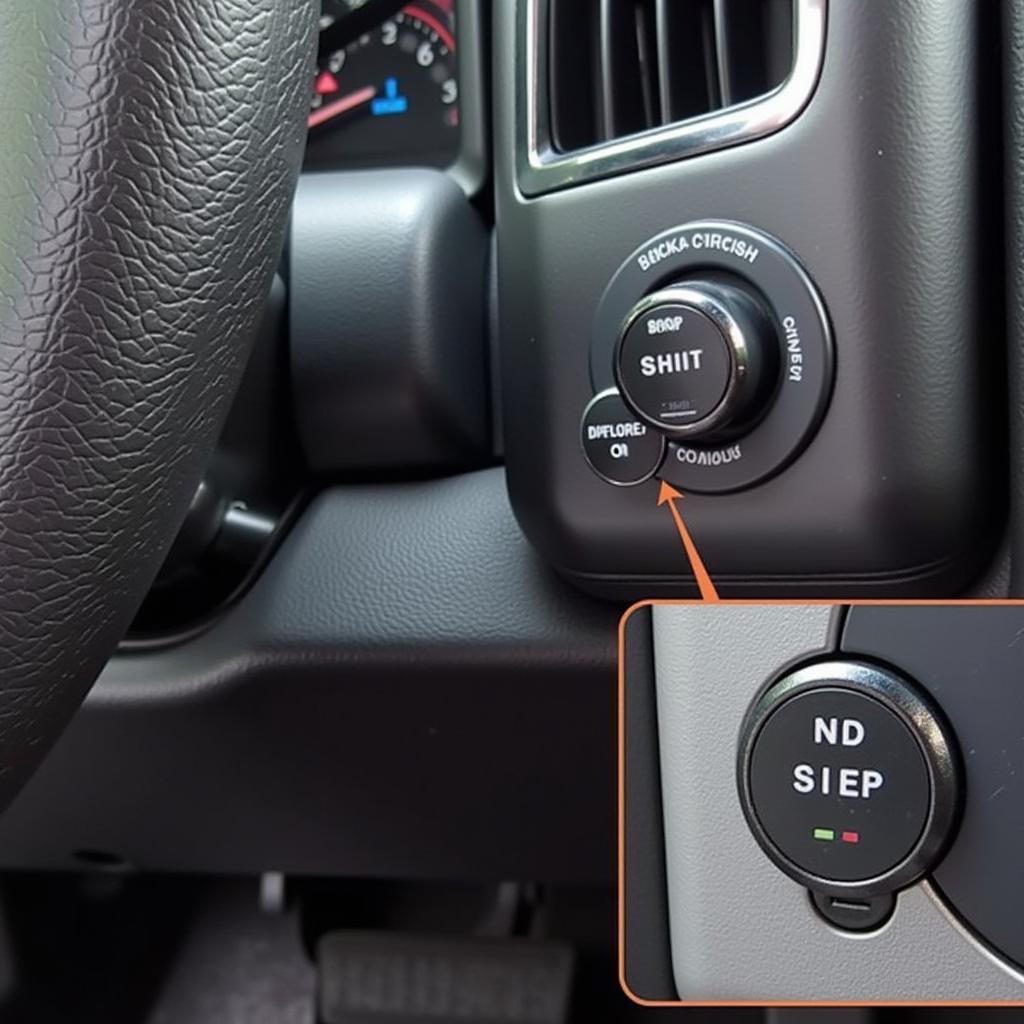A glowing brake warning light on your 911sc dashboard can be a real buzzkill. While it usually signals a problem within the braking system, pinpointing the exact culprit within the “911sc brake warning light circuit board” can feel like navigating a labyrinth. Fear not, fellow Porsche enthusiast! This guide will equip you with the knowledge to demystify the circuit board and address those pesky warning lights.
Understanding the 911sc Brake Warning Light System
Before we delve into the circuit board, let’s understand the broader brake warning light system. Your 911sc employs a straightforward system designed to alert you of potential issues:
- Hydraulic Pressure Loss: A drop in brake fluid, often indicating a leak, triggers the warning light.
- Parking Brake Engagement: The light illuminates when the parking brake is engaged, serving as a handy reminder.
- Brake Pad Wear: Many 911sc models feature wear sensors in the brake pads. When the pads thin out, the sensors trigger the warning light.
The Circuit Board’s Role: Connecting the Dots
Think of the “911sc brake warning light circuit board” as the brain behind the warning light system. This small but mighty component receives signals from various sensors within the braking system. It then processes these signals and, if necessary, commands the warning light to illuminate.
Common Circuit Board Issues:
- Loose Connections: Over time, vibrations can loosen connections on the circuit board, disrupting signal flow.
- Corrosion: Exposure to moisture can lead to corrosion, affecting the board’s conductivity and functionality.
- Component Failure: Like any electronic component, individual parts on the circuit board can fail, requiring diagnosis and replacement.
Troubleshooting the 911sc Brake Warning Light Circuit Board
While consulting a qualified Porsche technician is always recommended, here’s a simplified troubleshooting guide to help you understand the process:
-
Visual Inspection: Begin by visually inspecting the circuit board for any obvious signs of damage, loose connections, or corrosion.
-
Testing the Sensors: Using a multimeter, test the brake fluid level sensor, parking brake switch, and brake pad wear sensors for proper operation.
-
Checking for Continuity: Test the wiring between the sensors and the circuit board for continuity, ensuring that signals are transmitted effectively.
-
Circuit Board Inspection (Advanced): If the previous steps don’t reveal the issue, a closer inspection of the circuit board itself may be necessary. This typically involves specialized tools and expertise to test individual components on the board.
“Remember, working with automotive electrical systems can be dangerous. If you are not comfortable with the process, it’s best to consult a professional.” – Mark S., Porsche Master Technician
Beyond the Circuit Board: Other Potential Culprits
While the circuit board is a common suspect, it’s crucial to remember that other components can trigger the brake warning light:
- Worn Brake Pads: If your 911sc doesn’t have wear sensors, inspect your brake pads regularly for wear and tear.
- Low Brake Fluid: Check your brake fluid reservoir and top it off if necessary. Remember, a sudden drop in fluid often indicates a leak, which requires immediate attention.
- Faulty Brake Light Switch: A malfunctioning brake light switch can sometimes cause the warning light to illuminate.
Preventive Maintenance: Keeping the Light at Bay
Prevention is always better than cure. Here are some tips to keep your 911sc brake warning light off and ensure optimal braking performance:
- Regular Inspections: Inspect your braking system, including the circuit board, during routine maintenance checks.
- Address Leaks Promptly: Any signs of brake fluid leaks should be addressed immediately by a qualified technician.
- Quality Parts: When replacing components like sensors or the circuit board itself, opt for high-quality parts from reputable sources.
By understanding the “911sc brake warning light circuit board” and following these tips, you’ll be well-equipped to keep your Porsche roaring down the road with confidence. Remember, a well-maintained car is a happy car, and a happy car makes for a happy driver!

